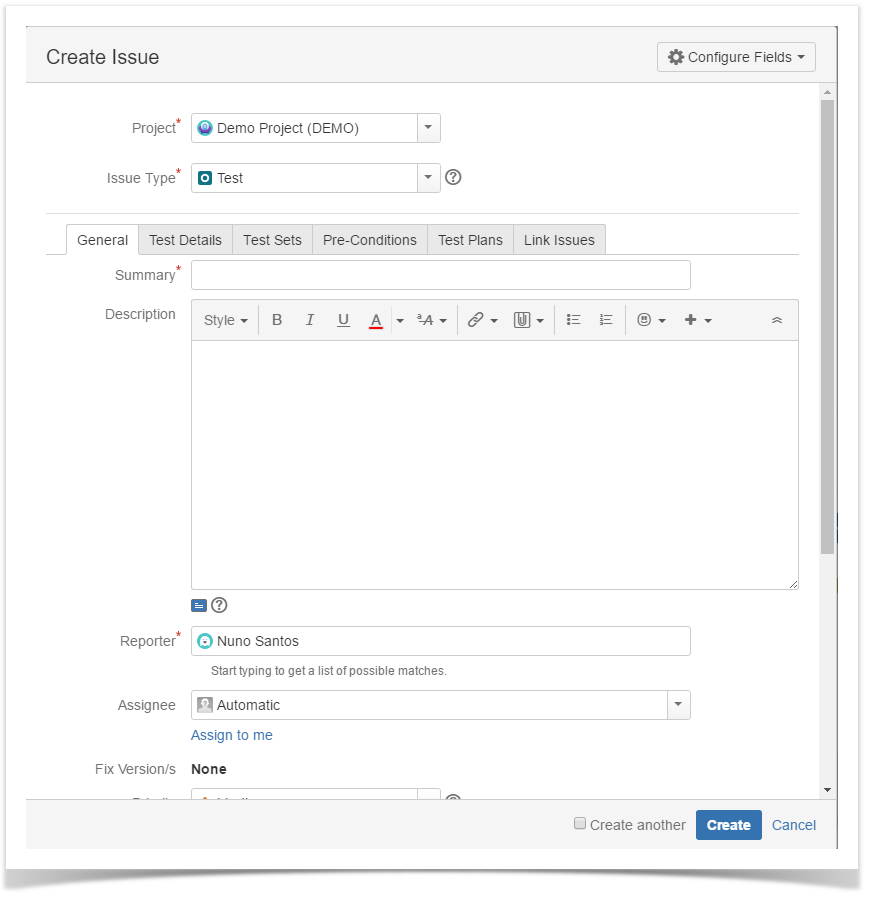Page History
| UI Steps | |
|---|---|
|
Using the top "Create" button"
In order to create a new Test Issue,
Click the Create Issue at the top of the screen to open the Create Issue dialog box / page.
Select the Project and on Issue Type, select Test.
Step 4: On the Test Details tab, select the Test Type and complete all appropriate fields;
| Info |
|---|
There are 3 Types of Test in Xray they are : Manual , Generic and Cucumber We will talk on them in the next chapter, for now we will stick with the most common one "Manual" |
- Select the Test Type as Manual.
- After filling out the Manual Steps fields, press the Add button to jump to the next Manual Step.
- Use the Pencil button to edit a previously entered Manual Step, and press the Update button when done.
- Use the Bin button to delete a previous entered Manual Step.
- To change a Manual Step position in the Test, drag the left area of the row and drop it to the desired place.
| Tip | ||
|---|---|---|
| ||
As spoken a Test is a Jira issue, if you want to customize your "Test" with more metadata go ahead and do it! Talk with your Jira administrator and go wild. |
|
...
From the requirement issue screen
...
|
...
...
|
...
|
| Tip | ||
|---|---|---|
| ||
The concept as you probably already figure it out is the same as Epics and Stories. |
| UI Step |
|---|
CloneCloning a Test issue creates a new Test with all the information of the cloned Test, except its executions. Therefore, the cloned issue will not be associated with any Test Execution issue. Step 1: Select More > Clone. The Clone Issue screen will appear. Step 2: You can edit the clone Test's Summary if you wish. - If the test contains links to other issue(s), you can select whether or not to include the links in the new clone test. - If the test contains sub-tasks, you can select whether or not to create the sub-tasks in the new clone test. - If the test contains attachments, you can select whether or not to include the attachments in the new clone test. Step 3: Click Create. |
| UI Step |
|---|
Extra |
...
|







